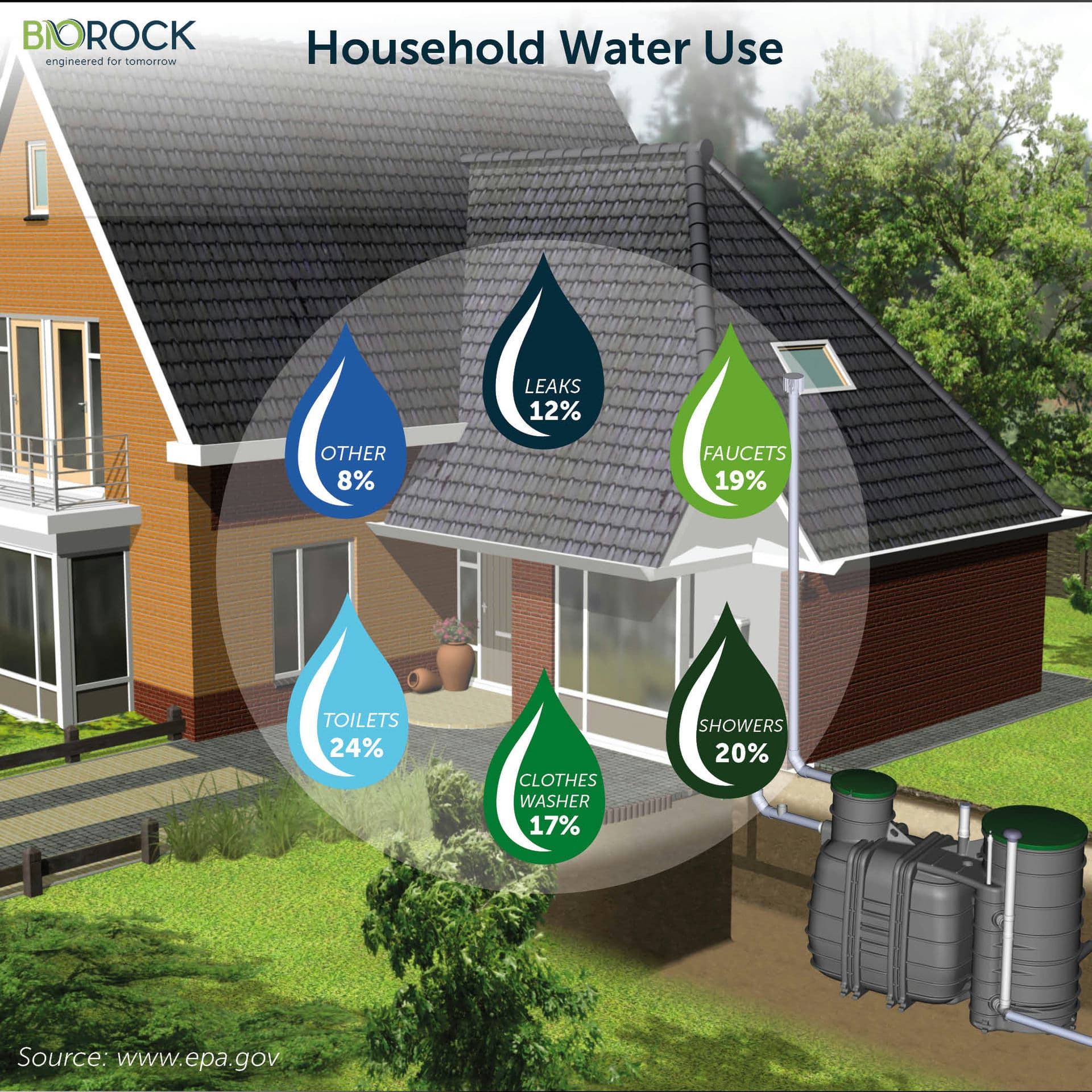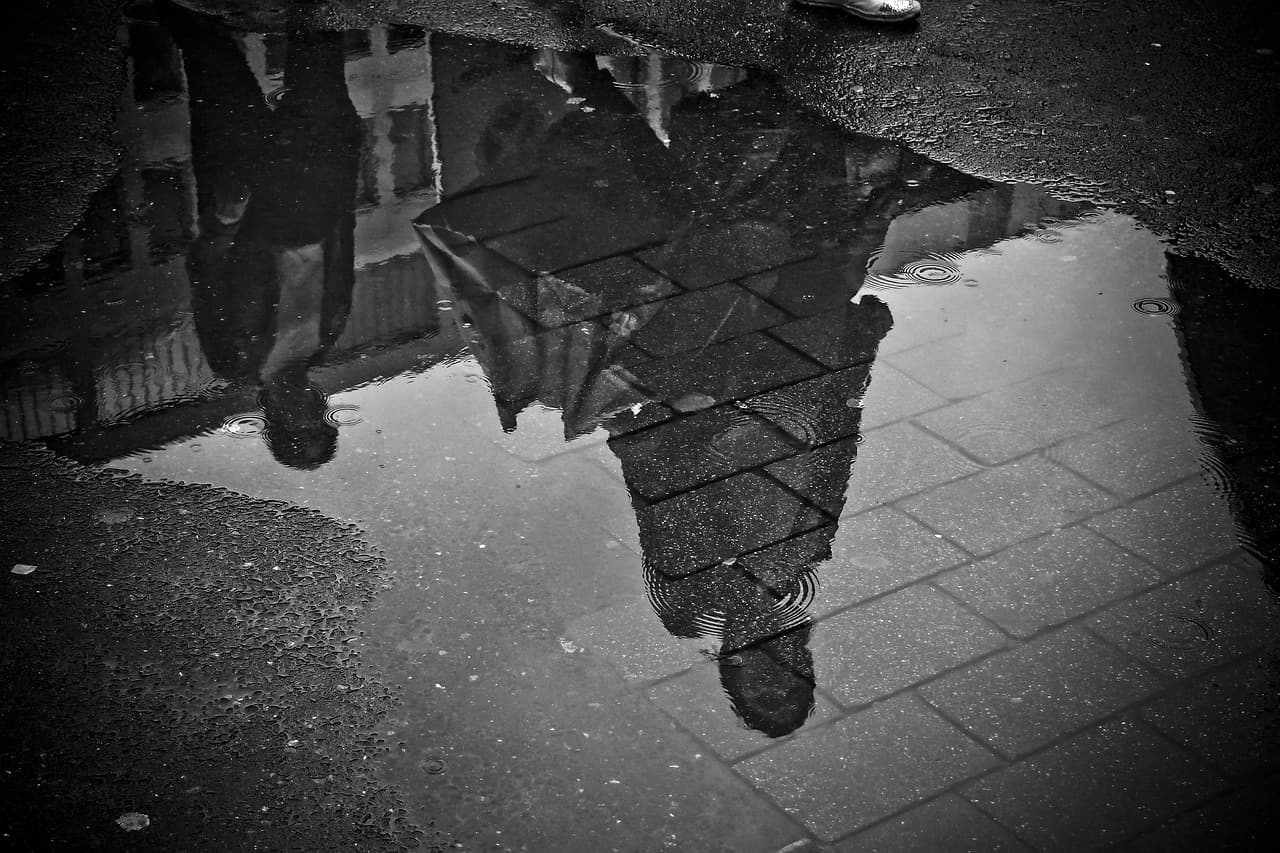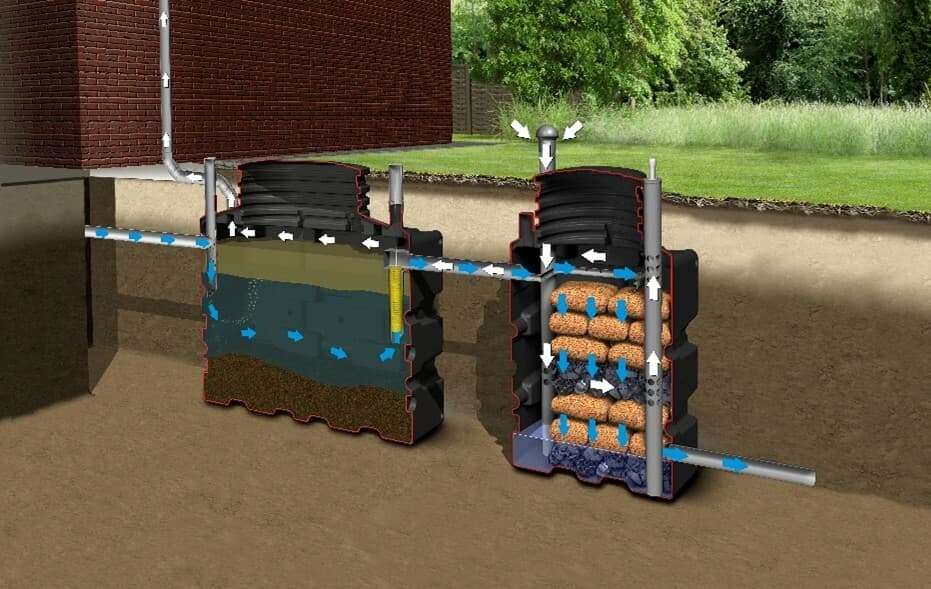Did you know that the average person in France produces more than 150 liters of wastewater per day? That's a lot of wastewater! But have you ever wondered where all this wastewater goes? Or how it is treated before being released into the environment? Today, we're going to take a look at the sewage system, how it works, and how it's used. Read on to learn more about this essential but often invisible infrastructure.
Domestic Wastewater: The wastewater that flows down our drains on a daily basis can be divided into two categories. Grey water comes from baths, sinks, showers, appliances, etc. Black water comes from toilets.

When we use this drinking water in our daily lives, we pollute it. This wastewater is thus loaded with elements of various kinds, including organic matter (for example, food remains when we rinse our plate in the sink), mineral matter (such as nitrogen, phosphorus, etc., which are mainly discharged via urine) and micro-organisms (which come mainly from fecal matter, but very little, if any, from urine). They may also contain - in smaller proportions - certain heavy metals that come from the use of certain cosmetic and hygiene products.
Industrial wastewater: This water comes from industry in the broadest sense of the term, since it includes water from factories, restaurants, or agricultural establishments for example. These industries consume water for their activity(s), whether it is production, service, or any other type. Wastewater from these industries is generally more polluted than domestic wastewater: some of it may contain heavy metals, pharmaceutical by-products, and organic matter: it all depends on the type of activity for which it was used. There are as many types of "industrial" wastewater as there are types of industries!
Rainwater and runoff: By definition, this water comes from atmospheric precipitation. Rainwater contains pollutants even before it hits the ground: as it falls, it comes into contact with various sources of pollution such as industrial smoke or smoke from urban heating, or even gases from automobile traffic. Depending on the geographical area, this rainwater can therefore be loaded with heavy metals, fine particles, and other molecules that are more or less harmful to health and the environment (e.g. acid rain). This is the reason why, on a worldwide scale, it is strongly advised against consuming rainwater directly.
 When it falls on roofs, sidewalks, and roads, it continues to encounter other types of pollution: this is called the phenomenon of leaching. Leaching and therefore the volume of runoff water is all the more important because it is intrinsically linked to the phenomenon of soil sealing: when cities grow, the creation of new neighborhoods or new roads involves the use of materials such as concrete or asphalt, as much of the initially (and naturally) porous surfaces, such as earth or grassy surfaces, disappears. Rainwater cannot infiltrate the soil, and will therefore run off and constitute a new pollutant load. This runoff water requires treatment before being released into the environment and is therefore generally directed to the collective sewerage system which, when possible, absorbs this pollutant load by integrating it with other types of wastewater.
When it falls on roofs, sidewalks, and roads, it continues to encounter other types of pollution: this is called the phenomenon of leaching. Leaching and therefore the volume of runoff water is all the more important because it is intrinsically linked to the phenomenon of soil sealing: when cities grow, the creation of new neighborhoods or new roads involves the use of materials such as concrete or asphalt, as much of the initially (and naturally) porous surfaces, such as earth or grassy surfaces, disappears. Rainwater cannot infiltrate the soil, and will therefore run off and constitute a new pollutant load. This runoff water requires treatment before being released into the environment and is therefore generally directed to the collective sewerage system which, when possible, absorbs this pollutant load by integrating it with other types of wastewater.
The demographic growth as well as the growth of the activity on a worldwide scale imply an increase in production, and thus in the pollution emitted - among others - by industries and agriculture. It is this pollution that is degrading, since the beginning of the industrial era and more and more rapidly, our environment, including water resources.
These water resources are essential for us and for all the ecosystems on which they depend, and they are not inexhaustible. All over the world, millions of people already do not have access to drinking water, and the trend is not decreasing since with growth, the needs also increase, which only reinforces the tensions.
The latest international studies show that without efficient and intelligent management of this "blue gold" throughout its cycle, the risks of shortage will increase. It is therefore urgent and necessary to adopt another way of using water, in particular by investing in equipment capable of treating it and then returning it to the natural environment without damaging or polluting it; but also and above all by reducing our daily consumption.
A wastewater system is generally composed of a sewer network and a treatment plant. The network is the first step taken by the water: it collects and transports the wastewater from the houses or industries connected to it to the treatment plant(s) located downstream. During the second stage, the wastewater is treated and then returned to the natural environment.
There are 2 types of sanitation:
Collective: These are sanitation systems that collect and treat the wastewater of a given population; which can range from a small town of a few hundred or thousands of inhabitants to large cities of several hundred thousand or even millions of inhabitants! These infrastructures are generally managed by municipalities, agglomerations, groups of municipalities, or a union of agglomerations, in short: by a public entity. The latter owns the wastewater collection, transport, and treatment facilities on its territory, and is responsible for the entire cycle. It can choose between two main types of operation:
The people or industries connected to this collective sanitation system contribute financially, via taxes for example, to the operation of these installations as well as to the necessary investments.
Examples of collective vs. non-collective sanitation installations
Non-collective: In households not connected to the public water supply network, individualized sanitation is used instead of collective sanitation. These are mainly scattered settlements such as small isolated villages. According to the regulations, they must be equipped with a primary treatment system, generally called a primary tank or septic tank, and a secondary treatment system to purify the settled wastewater.
An efficient pre-treatment is necessary to ensure the success of the subsequent treatment and to preserve the electromechanical equipment and includes 3 important operations:
Once the pre-treatment is done, the primary treatment takes place. It is in this stage that the settling of the suspended solids (SS) by gravity takes place. About 60% of the suspended solids are removed. The treatment time depends on the amount of material to be removed, but also on the capacity of the plant. The removed materials form a sludge bed at the bottom of the tank, which is called "primary sludge".
Then comes one of the main steps which is the secondary treatment. One of the most used methods for this treatment is the so-called "activated sludge" process, which uses bacteria to degrade the pollution. This process consists of adding a mixture rich in bacteria to the wastewater, so-called aerobic bacteria, which will develop in the biological basin using the pollution present in the pre-treated water for their metabolism: this process results in the formation of biological sludge. Aeration is extremely important, as it allows oxygen to be injected into the water: this oxygen is necessary for aerobic bacteria, without which they cannot develop and fulfill their role.
The final stage is clarification. Like primary settling, this stage uses gravity in a tank (called a clarifier) to separate the bacteria in the biological tank from the clear water. The biomass, which settles at the bottom of the tank, constitutes the biological sludge and will be partly extracted and recirculated; the clear water is the water considered treated and can then be discharged into the natural environment. The regulations impose controls on these discharges via a series of analyses on defined parameters. The frequency and the number of analyses depend in particular on the size of the treatment plant and the volume of treated water. For large capacity plants, daily analyses 365 days a year are required, as their impact on the natural environment can be significant.
Other treatments can be added after these classical processes, depending on the needs: tertiary decantation, filtration, disinfection, etc.
 Depending on the needs of the inhabitants, a primary tank that will pre-treat the raw wastewater can be installed. This tank alone is capable of treating 30% of the initial pollution. After this step called "Primary Treatment", a small treatment unit is installed to allow the biological treatment by micro-organisms. Finally, the discharge is done either by infiltration in the ground or in a water course.
Depending on the needs of the inhabitants, a primary tank that will pre-treat the raw wastewater can be installed. This tank alone is capable of treating 30% of the initial pollution. After this step called "Primary Treatment", a small treatment unit is installed to allow the biological treatment by micro-organisms. Finally, the discharge is done either by infiltration in the ground or in a water course.
At BIOROCK, we specialize in non-collective wastewater treatment. You can find the treatment solution that best suits your needs and our team of experts can help you install it. We have a wide selection of non-electrical sewage treatment systems ranging from 4 P.E. to several hundred, so you are sure to find the perfect one for your home or business.
In short, wastewater treatment is an essential element in the preservation of the health and well-being of people and our environment. It can be done by collective or non-collective methods, depending on the requirements of each situation. All types of wastewater must be treated to ensure efficient removal of pollutants, thus protecting ourselves and our natural resources for future generations. At BIOROCK, we specialize in non-sewage treatment solutions for businesses and homes, so that everyone can ensure that the water they discharge is of better quality.
We hope this information has helped you better understand wastewater treatment and its importance. If you have any further questions or would like to learn more about our services, please do not hesitate to contact us.